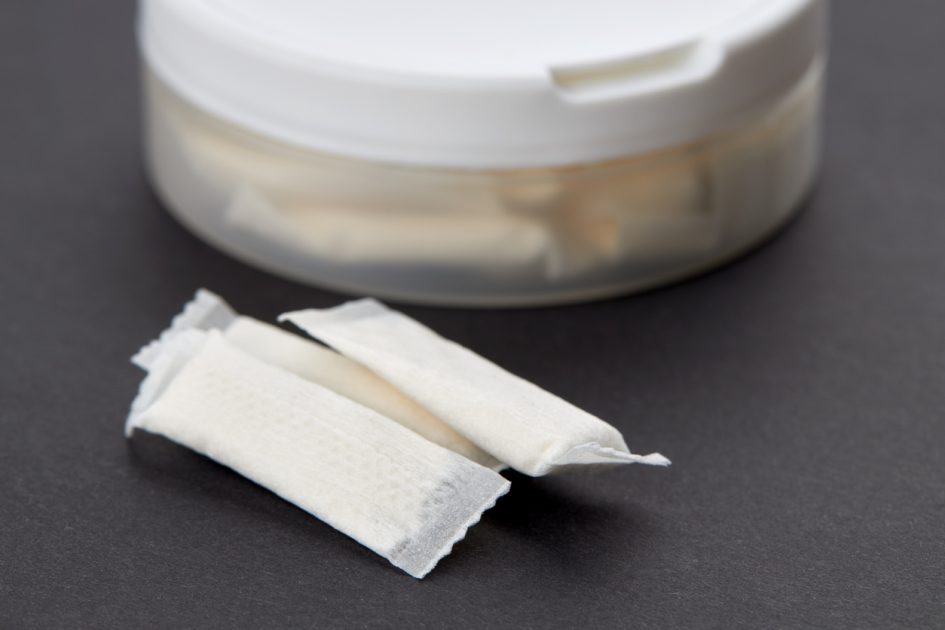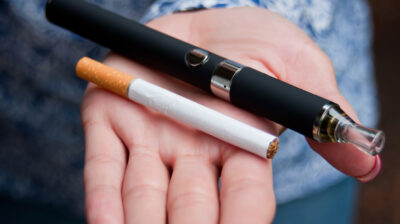What are nicotine pouches (snus)?
Nicotine pouches are a smokeless nicotine product that are placed inside the mouth, between the lip and gum or cheek

Nicotine pouches are a smokeless nicotine product. They are sometimes also known as snus, though snus and nicotine pouches are not the same thing.
What are nicotine pouches (snus)?
Nicotine pouches are made of a teabag-like microfibre material that is porous, which means it has some holes in it. They are placed inside the mouth, between the gum and the cheek or between the lip and the gum, and the nicotine in the pouches is absorbed into the body.
Nicotine pouches do not contain tobacco. Instead, the nicotine in these pouches is made in a lab (synthetic). Occasionally, the nicotine in these pouches is taken (derived) from actual tobacco. They also contain other chemicals, including cancer-causing ones (carcinogens) and artificial sweeteners or flavours.
They are sold under a number of brand names such as Zyn, Nordic Spirit and Velo.
Are snus and nicotine pouches the same thing?
Snus is a Swedish oral tobacco product that looks like a nicotine pouch but has a few differences. The main difference is that snus contains real tobacco, while nicotine pouches do not. Snus is a form of smokeless tobacco product.
Snus has been on the market for longer than nicotine pouches. The sale of snus is illegal in the EU, except in Sweden.
While snus is illegal in Ireland, nicotine pouches are legal. This is because these newer products do not technically contain tobacco and so are not currently controlled by any tobacco legislation. Advertising restrictions placed on tobacco and vaping products also do not apply to these products as a result.
Are nicotine pouches addictive?
Nicotine pouches, like tobacco and vapes/e-cigarettes, contain nicotine, a highly addictive substance.
Nicotine affects both the brain and body. When nicotine enters the body, it causes the body to release adrenaline. It also stimulates parts of the brain associated with a feeling of pleasure and reward. These effects can cause people to become addicted to nicotine, leading to cravings, headaches and other side effects of nicotine withdrawal when you try to quit.
What are the short-term effects?
Nicotine, the chemical in these pouches, is a stimulant. As a result, they can produce a ‘buzz’, head rush or feeling of relaxation a few minutes after taking them.
Some other immediate side effects can include;
- Decreased appetite
- Increased blood pressure and heart rate
- Dizziness
- Headache
- Nausea
- Diarrhea
- Irritation of the mouth and gums
They do not involve smoking, unlike traditional tobacco products like cigarettes, meaning they don’t expose people who use them to all of the same chemicals. However, nicotine products are not a ‘safe’ product and contain various harmful chemicals.
What are the long-term effects?
Nicotine pouches are relatively new products and the long-term impacts of their use aren’t fully understood. However, as they contain nicotine, using them long-term will have the same negative health impacts that using nicotine over extended periods of time has. Nicotine affects the body and the brain in various ways both short-term and long-term.
Smokeless tobacco products like snus have been linked to the development of mouth (oral) cancer. Scientists are still in the process of investigating whether pouches have these same impacts.
They can irritate the mouth and gums and it is possible that they could cause lesions in the mouth that could be cancerous or pre-cancerous. Using pouches can also lead to tooth decay and brown or yellow stains (discolouration) on the teeth. They can also irritate the gums and cause the gums to pull away from the teeth (gum recession).
The effects of nicotine
Until about age 25, the brain is still developing and using nicotine can harm the parts of the brain that control attention, learning, mood and impulse control.
Nicotine can raise your blood pressure and cause problems in the lungs, stomach, heart and more.
Physical side effects of nicotine include:
- Increased heart rate and blood pressure: because nicotine is a stimulant, it raises the amount of adrenaline, in the body, which raises heart rate and blood pressure.
- Damaged blood vessels: nicotine narrows arteries and damages blood vessel walls, increasing the risk of blood clots, heart attack, and stroke.
- Increased risk of cardiovascular disease: nicotine contributes to the development of atherosclerosis (plaque buildup in arteries) and can lead to heart disease and other heart problems
Support if you want to quit
If you are finding it hard to quit or reduce how much you use them on your own, you can speak to your GP or pharmacist.
Using Nicotine Replacement Therapy (NRT) such as patches, inhalers or gum, may be helpful. NRT has not been developed or tested as a tool for quitting nicotine pouches. However, they may be useful to people who want to stop.
If you are thinking of using NRT, speak to your GP who may prescribe certain medicines to deal with nicotine withdrawal.






